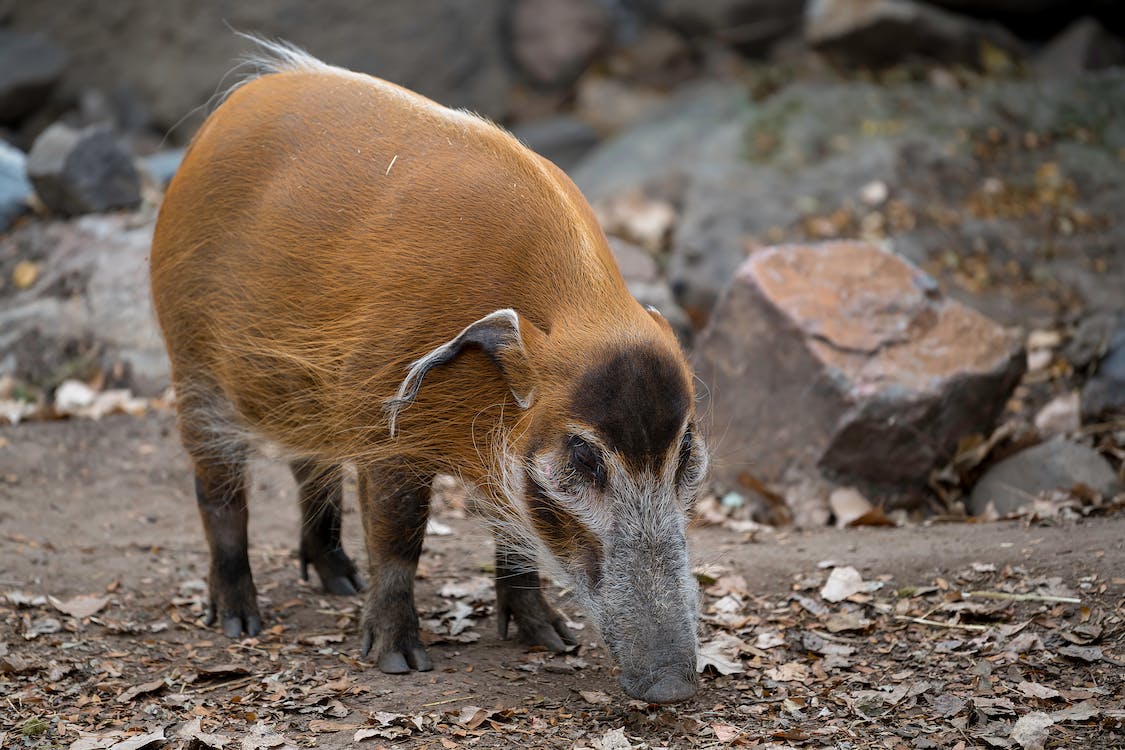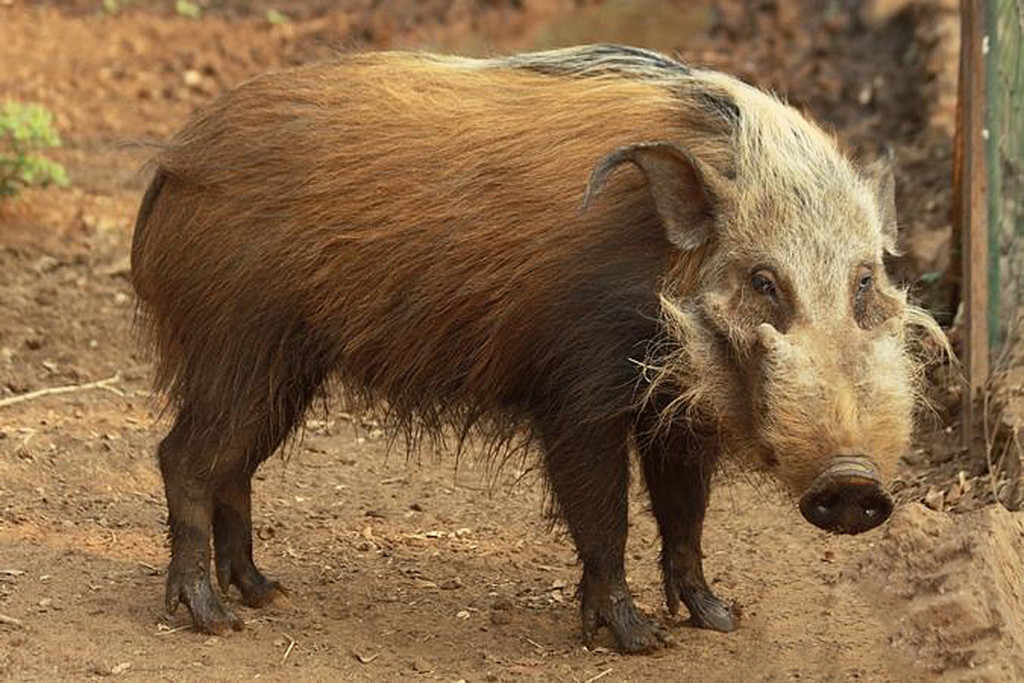The Bushpig, also known as Potamochoerus larvatus, is a pig species that is indigenous to east and southern Africa. It was an introduced species in Madagascar, and several Bushpig sightings were also observed on Comoro island of Mayotte. This pig species was first described in 1822 by French zoologist and paleontologist Georges-Frédéric Cuvier.
The Bushpig has six subspecies, which include the following:
- Potamochoerus larvatus larvatus or Madagascar bushpig
- Potamochoerus larvatus edwardsi or Edwards’ Bushpig
- Potamochoerus larvatus hassama or White-faced bushpig
- Potamochoerus larvatus koiropotamus or Southern Bushpig
- Potamochoerus larvatus nyasae or Nyasan bushpig
- Potamochoerus larvatus somaliensis or Somalian Bushpig
The population of Bushpig is not considered threatened. According to The World Conservation Union or IUCN research, the conversion of previous forests to secondary shrub and agricultural lands has paved the way for the rise of the Bushpig population in several areas. It also turns out that efforts to control or decrease the Bushpig population have usually proved unsuccessful. For these reasons, the International Union for Conservation of Nature (IUCN) Red List categorized this species as Least Concern.
The Bushpig’s common prey are Lions, Leopards, Hyaenas, Pythons, and humans.
Its seven levels of scientific classification are as follows:
Kingdom: Animalia
Phylum: Chordata
Class: Mammalia
Order: Artiodactyla
Family: Suidae
Genus: Potamochoerus
Species: P. larvatus
The physical characteristics of a Bushpig
An adult Bushpig measures between 66 and 100 cm at the shoulder and weighs 55 to 150 kg. It resembles a domesticated pig, except it has a blunt, muscular snout, pair of small eyes, pointed, tufted ears, and buckled toes.
Its coat varies from light reddish-brown to brownish-grey to black in color. It is usually black within the head region, generally a darker shade than the rest of the body. It has long, erectile hairs that run along the spine, forming a mane that starts between its tufted ears and extending to the rear.
Young Bushpigs are born with temporary brown and yellow stripes that disappear within months. Male Bushpigs have a bony ridge and warts on their snouts. They have tusks and canines that are directed outward and upward. The upper tusks are small and usually barely visible.
The distribution and habitat of Bushpigs
This species is endemic to east and southern Africa, particularly in countries such as Somalia, eastern and southern former Zaire, south of Cape Province and Natal in South Africa, Madagascar, and Comoro & Mayotte Islands.
Bushpigs are found in a wide range of habitats, from sea-level areas to montane forests, which measures up to 4,000 m on Mt. Kilimanjaro. They also frequent in gallery forests, flooded forests, swamplands, woodlands, scrublands, and cultivated areas. Bushpigs can adapt to cultivated areas wherein agricultural food crops are abundant.
The behavior of a Bushpig
Bushpigs are seen as sedentary animals that are very territorial. They are generally nocturnal, except in the colder months when they are diurnal. Bushpigs take refuge in dense vegetation.
Their favorite activity is wallowing. Even so, they enjoy following frugivorous monkeys that feed on trees, waiting for the fruit to fall onto the ground.
Bushpigs communicate through grunting, squealing, and roaring. They cry a ling, resonant growl as an alarm call. They have excellent smell and hearing senses, but they have poor eyesight.
They are also social animals—they form groups of up to 12 individuals. One group usually consists of a dominant male, dominant female, and other females and young. Bushpigs have a polygamous mating system. Dominant male Bushpigs exhibit territoriality during the mating season. They usually exclude other males from access to a group of females.
Male Bushpigs compete for access to female Bushpigs by butting each other’s heads and engaging in forehead shoving matches.
After a gestation period of around 127 days, female Bushpigs give birth between September and November. A female Bushpig gives birth to 1 to 6 young, which the female will nurse for 2 to 4 months. Male Bushpigs also provide defense and parental care to the young. They will guide the young to feeding grounds and will aggressively drive other Bushpigs off the feeding areas.
The diet of a Bushpig
This pig species is an omnivore—it feeds on plant roots, seeds, bulbs, tubers, rhizomes, fruits, nuts, and insect larvae. They also eat a variety of invertebrates, small vertebrates, carrion, potatoes, maize, tomatoes, and other vegetables.
WILDLIFE PARKS AND RESERVES WHERE THIS SPECIES IS FOUND:


